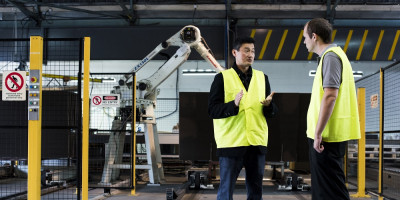Questions, answers and resources
What is this?
Competitors aren't always just similar products. They may be products or services that meet the same consumer need, so think laterally when you consider who you are competing with for market share.
Risks
- You focus on your product and not the user need it meets
- Customers find an easier or cheaper way to solve the same need
- You are competing for a share of spend with very different products or solutions to yours
Resources linked
- (Book) If You Build It Will They Come?: Three Steps to Test and Validate Any Market Opportunity
- (Support) Export NZ (Mentors) | Provided by Export NZ (EMA)
- (Support) Export Support | Provided by NZTE
What is this?
Competitors aren't always just similar products. They may be products or services that meet the same consumer need, so think laterally when you consider who you are competing with for market share.
Risks
- You focus on your product and not the user need it meets
- Customers find an easier or cheaper way to solve the same need
- You are competing for a share of spend with very different products or solutions to yours
Resources linked
- (Reference) ScaleUp NZ | Provided by Callaghan Innovation
- (Support) Export NZ (Mentors) | Provided by Export NZ (EMA)
- (Support) Export Support | Provided by NZTE
What is this?
This will depend on your business model. You may have existing sales channels in your business that the new product simply slots into. Or you may need to build your sales capacity, internally or externally.
Risks
- Your sales model adds unnecessary cost and time
- Your sales channels can't cope with demand
- You need additional sales support than anticipated
Resources linked
- (Support) Export NZ (Mentors) | Provided by Export NZ (EMA)
- (Support) Export Support | Provided by NZTE
What is this?
There are a range of models for how you get your product into the hands of customers. Have you investigated all the options available to you, and their relative costs and timeframes?
Risks
- You are hit with unexpected costs that impact on cashflow
- Stock stops moving due to cost disputes
- You don't explore all the available options and are stuck with an expensive logistics solution
Resources linked
- (Support) Business Mentoring | Provided by Business Mentors NZ
- (Support) Export Support | Provided by NZTE
What is this?
Your product may be simple to understand straight out of the box, or it might require instructional resources or direct training for the end user. Make sure you scope what is required and factor it into your budgets.
Risks
- Your product is hard to use or understand
- Your product is slow to take off due to a steep learning curve or inadequate education resources
- You need to redesign and replace your packaging
Resource(s) linked
- (Support) Export Support | Provided by NZTE
What is this?
Marketing and brand building are an important part of building the attraction factor of your product and building an audience who will want to buy it.
Risks
- Your branding and marketing don't adequately reflect the value of your product
- Not enough potential customers are exposed to your product
- You don't tell a compelling story about why your product is needed
Resources linked
- (Funding) Start-up Equity Investment | Provided by Angel Association
- (Funding) R&D Funding | Provided by Callaghan Innovation
- (Funding) Start-up Equity Investors | Provided by Icehouse Ventures
- (Funding) NZ start-up funding sources | Provided by Matu
- (Funding) Growth Capital | Provided by NZ Growth Capital Partners
- (Funding) Green Investment Finance | Provided by NZGIF
- (Funding) International Capital | Provided by NZTE
- (Reference) Free NZ images, video, infographics | Provided by NZ Story
- (Support) Business Mentoring | Provided by Business Mentors NZ
- (Support) Export NZ (Mentors) | Provided by Export NZ (EMA)
- (Support) Export Support | Provided by NZTE
What is this?
Launching into market comes with associated costs, including marketing, sales support and logistics to ensure your product hits the ground running.
Risks
- Your launch is delayed while you try and find additional funds
- Your launch has little impact
- You spread your budget too thin and try to do too many things
Resources linked
- (Book) If You Build It Will They Come?: Three Steps to Test and Validate Any Market Opportunity
- (Funding) Start-up Equity Investment | Provided by Angel Association
- (Funding) R&D Funding | Provided by Callaghan Innovation
- (Funding) Start-up Equity Investors | Provided by Ice Angels
- (Funding) NZ start-up funding sources | Provided by Matu
- (Funding) Growth Capital | Provided by NZ Growth Capital Partners
- (Funding) Green Investment Finance | Provided by NZGIF
- (Funding) International Capital | Provided by NZTE
- (Support) Export NZ (Mentors) | Provided by Export NZ (EMA)
- (Support) Export Support | Provided by NZTE
What is this?
Your product success can be impacted on by global trends, not just those in the markets you're selling in. Stay as informed as possible about consumer behaviour and product adoption trends.
Risks
- A major global event or shift severely impacts the demand for your product
- A growing consumer trend is directly in conflict with your product
- A different solution to the customer problem you solve gains traction in the market
Resources linked
- (Support) Export NZ (Mentors) | Provided by Export NZ (EMA)
- (Support) Export Support | Provided by NZTE


































